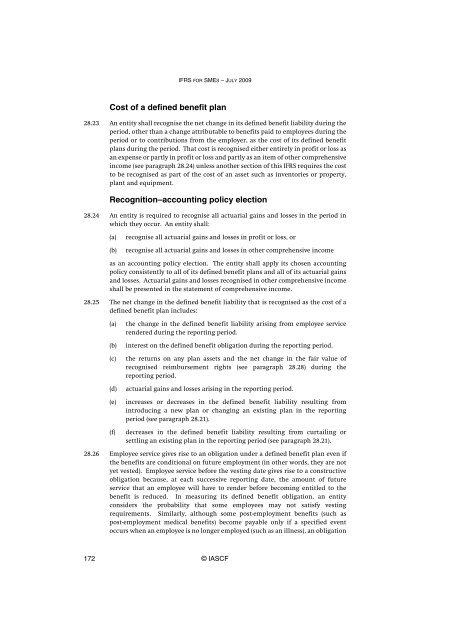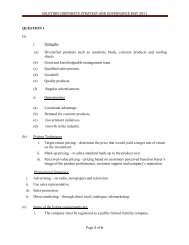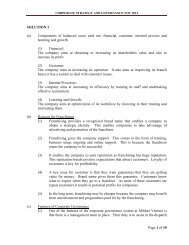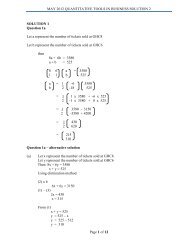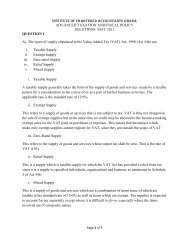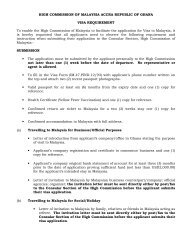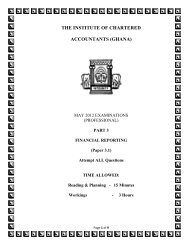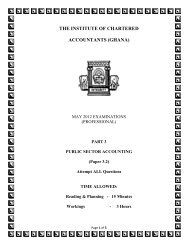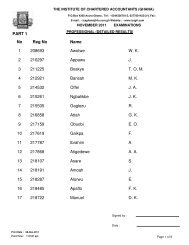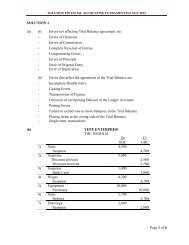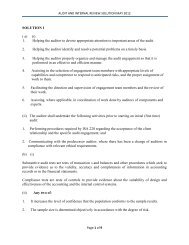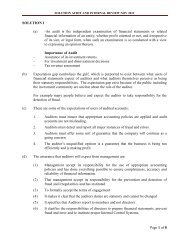(IFRS) for Small and Medium-sized Entities (SMEs)
(IFRS) for Small and Medium-sized Entities (SMEs)
(IFRS) for Small and Medium-sized Entities (SMEs)
You also want an ePaper? Increase the reach of your titles
YUMPU automatically turns print PDFs into web optimized ePapers that Google loves.
<strong>IFRS</strong> FOR SMES – JULY 2009Cost of a defined benefit plan28.23 An entity shall recognise the net change in its defined benefit liability during theperiod, other than a change attributable to benefits paid to employees during theperiod or to contributions from the employer, as the cost of its defined benefitplans during the period. That cost is recognised either entirely in profit or loss asan expense or partly in profit or loss <strong>and</strong> partly as an item of other comprehensiveincome (see paragraph 28.24) unless another section of this <strong>IFRS</strong> requires the costto be recognised as part of the cost of an asset such as inventories or property,plant <strong>and</strong> equipment.Recognition–accounting policy election28.24 An entity is required to recognise all actuarial gains <strong>and</strong> losses in the period inwhich they occur. An entity shall:(a)(b)recognise all actuarial gains <strong>and</strong> losses in profit or loss, orrecognise all actuarial gains <strong>and</strong> losses in other comprehensive incomeas an accounting policy election. The entity shall apply its chosen accountingpolicy consistently to all of its defined benefit plans <strong>and</strong> all of its actuarial gains<strong>and</strong> losses. Actuarial gains <strong>and</strong> losses recognised in other comprehensive incomeshall be presented in the statement of comprehensive income.28.25 The net change in the defined benefit liability that is recognised as the cost of adefined benefit plan includes:(a)(b)(c)(d)(e)(f)the change in the defined benefit liability arising from employee servicerendered during the reporting period.interest on the defined benefit obligation during the reporting period.the returns on any plan assets <strong>and</strong> the net change in the fair value ofrecognised reimbursement rights (see paragraph 28.28) during thereporting period.actuarial gains <strong>and</strong> losses arising in the reporting period.increases or decreases in the defined benefit liability resulting fromintroducing a new plan or changing an existing plan in the reportingperiod (see paragraph 28.21).decreases in the defined benefit liability resulting from curtailing orsettling an existing plan in the reporting period (see paragraph 28.21).28.26 Employee service gives rise to an obligation under a defined benefit plan even ifthe benefits are conditional on future employment (in other words, they are notyet vested). Employee service be<strong>for</strong>e the vesting date gives rise to a constructiveobligation because, at each successive reporting date, the amount of futureservice that an employee will have to render be<strong>for</strong>e becoming entitled to thebenefit is reduced. In measuring its defined benefit obligation, an entityconsiders the probability that some employees may not satisfy vestingrequirements. Similarly, although some post-employment benefits (such aspost-employment medical benefits) become payable only if a specified eventoccurs when an employee is no longer employed (such as an illness), an obligation172 © IASCF


